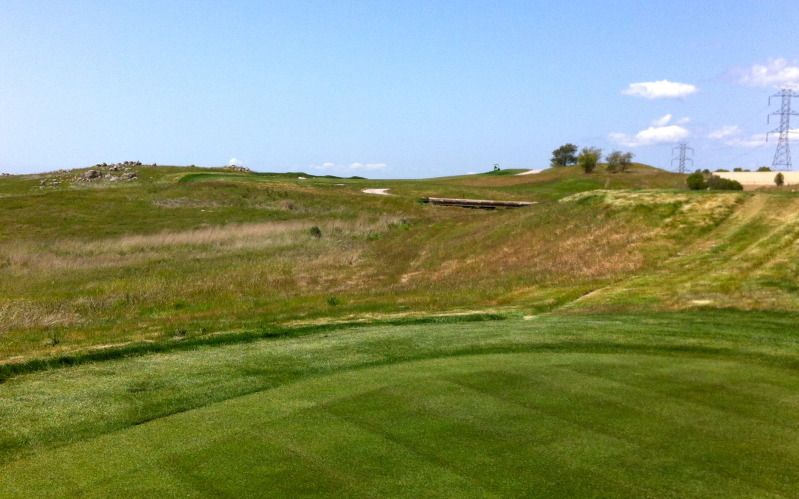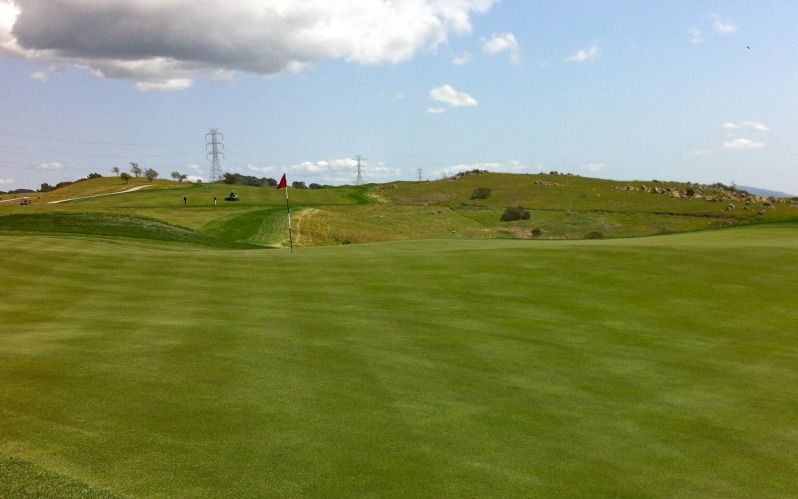TPC Stonebrae is located in Hayward, CA, about 35 minutes southeast of San Francisco and the same distance north of San Jose. Among other things, it is the host of the Nationwide Tour's TPC Stonebrae Championship which will take place next week. You'll notice some of the tournament accoutrements in these photos.
The course is designed by David Kidd on a series of hilltops at 1100 to 1500 feet above the bay. It's designed as a course for carts, mostly because of 3 or 4 very long and difficult uphill walks from green to tee.
I've tried my best to capture the green contours as that's really one of the key elements to the course. Stonebrae beats up a lot of people, but there's plenty of width and plenty to think about it, and it's by far one of my favorite courses in the bay area.


Virtual tour videos of each hole are at
http://www.bestapproachflyovers.com/TSF_tpcstonebrae/#1, par 4, 396/370. A bit of a tight start with OB not too far left of the fairway and a hazard to the right. From the fairway the green is slightly elevated with a big ridge running sideways across the green. This is the first of many greens where the back falls away.

Flag barely visible on right side of green.


#2, par 4, 461/385. The teeshot is the tough part here. The green is very wide, and though it is rolling, it is accessible across its front. Admittedly, not the most appealing backdrop to this green, but at least it's over with on the 2nd hole.


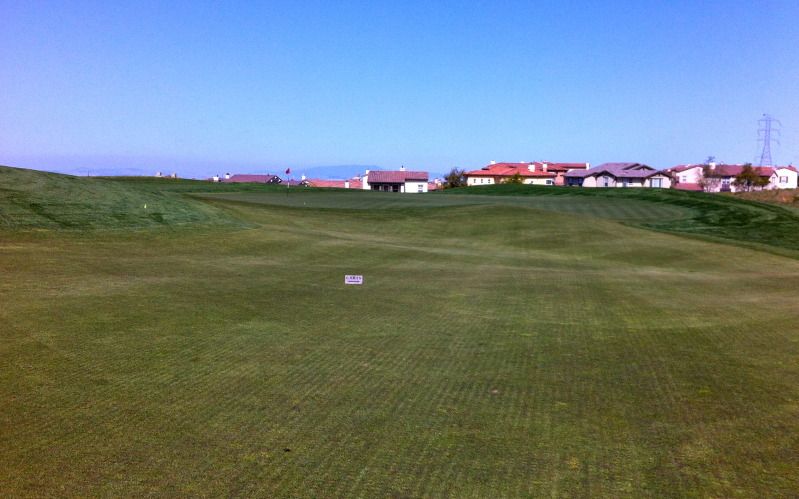

#3, par 3, 193/176. Reverse redan? Not quite, but the green does drop significantly from front-left to back-right. There's room to bounce the ball in from the left.
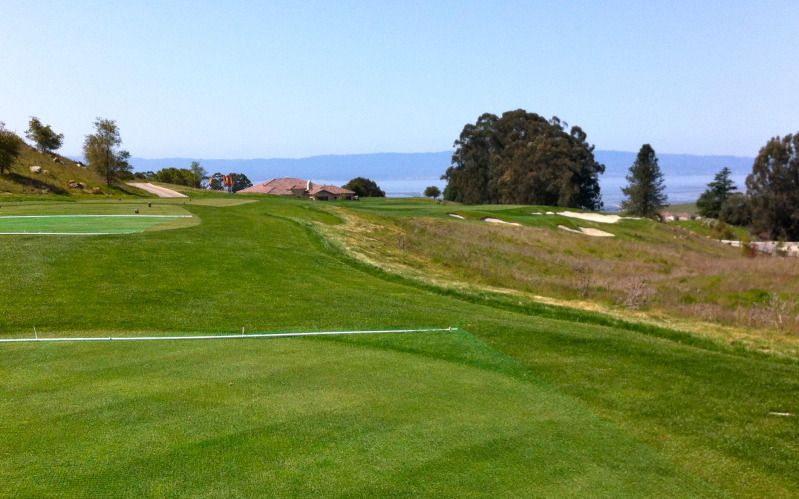


#4, par 5 for member play and par 4 for the Nationwide tour, 479/462. Another hole where the green isn't particularly visible from the fairway. A tricky green where right gets dangerous but left leaves a difficult up and down to a green that slopes away.

Pin barely visible in the right side of the gap in the trees.

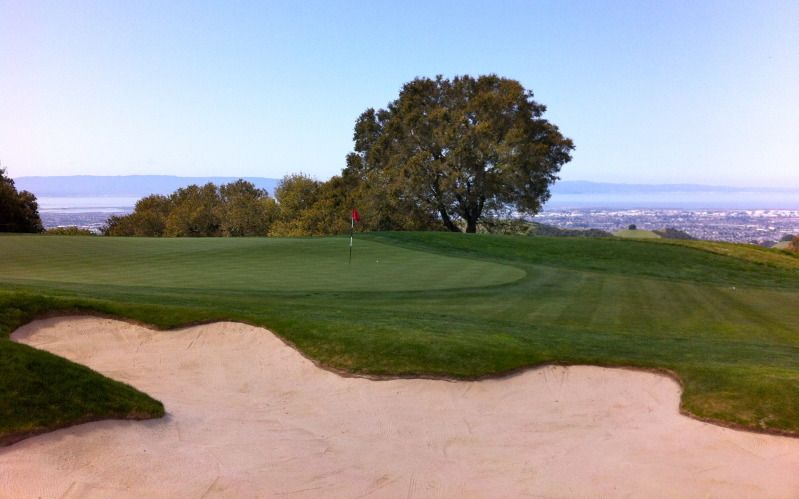
#5, par 4, 326/301. The fairway gets wider farther out, but the green is very shallow and seems to me difficult approach with a half wedge. Like a lot of holes here the green is large but the target areas are quite small.


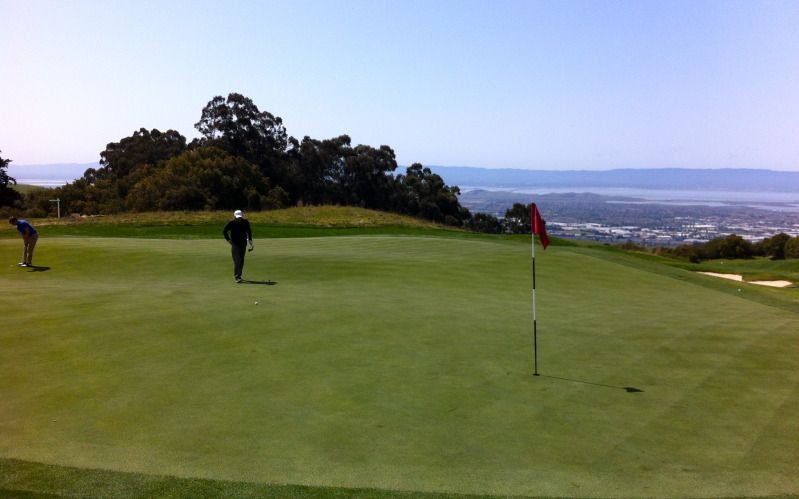

#6, par 5, 606/576. From the far back tees, it's 265 yards over the left fairway bunker to get to the fairway. A native area cuts across the fairway at about 400 yards, so a bad drive could lead to a 3rd shot of over 200 yards. There's lots of slope on and around the green, again, as you can see below.

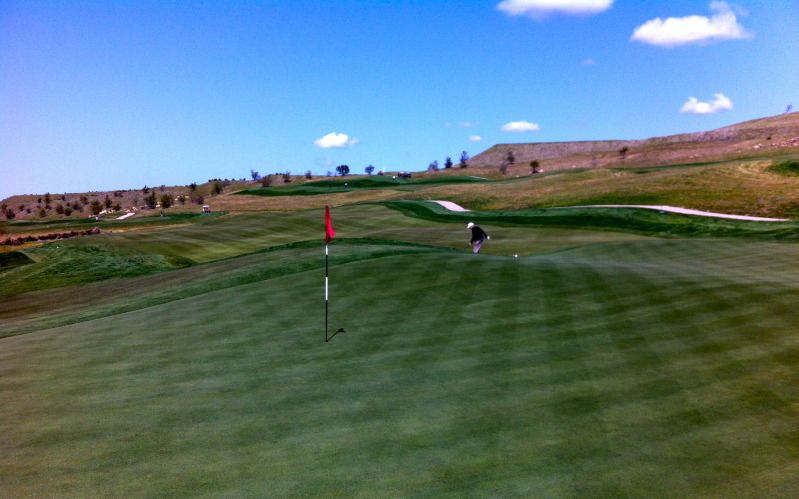
#7, par 3, 176/159. The left side of the green is pretty accessible, while the back right portion gets very tight.
Pin is just in front of the right side of the cart.


#8, par 4, 466/433. Probably the most controversial bunker on the course is in the middle of this fairway, and there's not much room on either side. The approach is relatively straight-ahead to a somewhat narrow green.

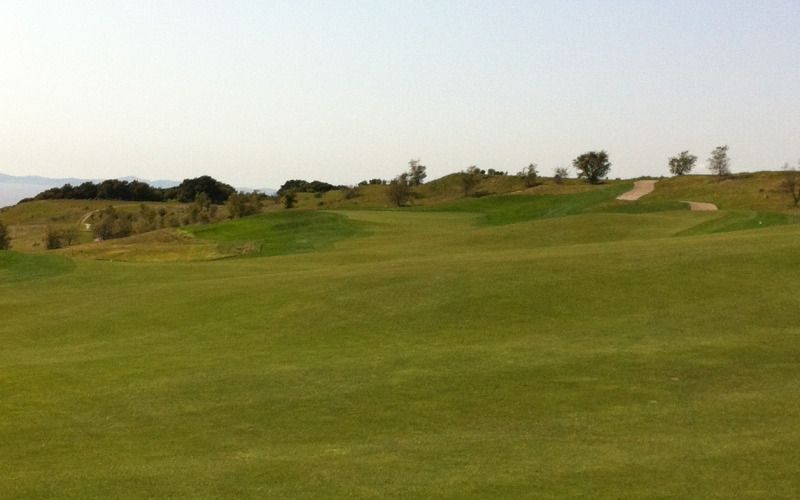
#9, par 4, 438/407. Unfortunately I did not get any pictures of this hole, but it's one of the more standard holes on the course, a straight and uphill par 4 to another sloping green.
#10, par 4, 437/397. The line here is actually just left of the distant split in the cart path to a portion of the fairway hidden behind the hill. Such a teeshot will leave a good view of the green, while a teeshot played to the visible part of the fairway leaves a completely blind second shot over the fairway bunker in the hill. I don't have statistics, but this hole must drop 100 feet to the green, most of it from tee to fairway.

From the left side of the fairway
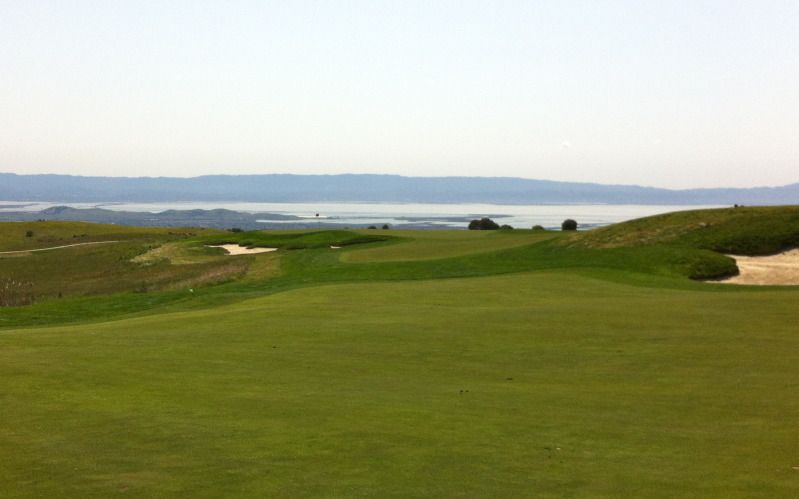
From the right side of the fairway. Flag is barely visible over left side of hill - and there's another 20 yards of fairway right of this with zero view at all.

Tee is by the white tent.

#11, par 3, 240/204/176 (even the Nationwide tour doesn't play 240 here). Slightly Engh-ish front bunker, but the main feature is the high right and low left tiers, which will be repeated (and in a similar direction) on #15.


#12, par-5, 625/571. This is the most noted hole at Stonebrae, and it really is very cool. A drive down the fairway will keep going, going, going - I hit it 395 this afternoon - and despite its length, the pros will be hitting irons to this green after a good drive. Layups would be online with the green and short of the crossing native area. Few players will play out to the right as the approach angle is terrible from there; the green slopes in all sorts of directions, but mostly hard right to left.


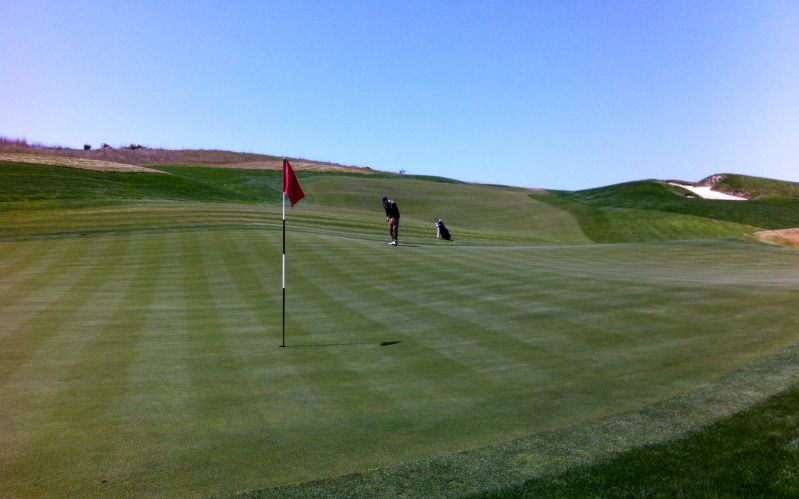
Huge slopes and funnel on this green. From where this player is putting, it's pretty tough to get it within 10 feet.

#13, par 3, 160/138. Another green with a high front that drops away to the back, especially the back left.
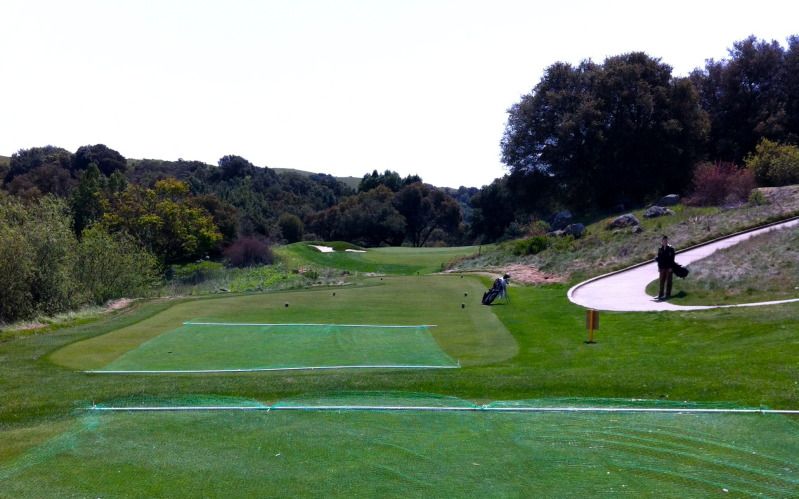
It's kind of a walk up to the 14th tee...

...although this view back to 12 and 13 is pretty neat.

#14, par 4, 377/321. The teeshot goes a bit uphill and the approach climbs up further. The run-off short of the green is no good at all as you can see relative to the height of my friend playing from it.




The tee is in line with the tree on the distant hill in the right side of this photo.
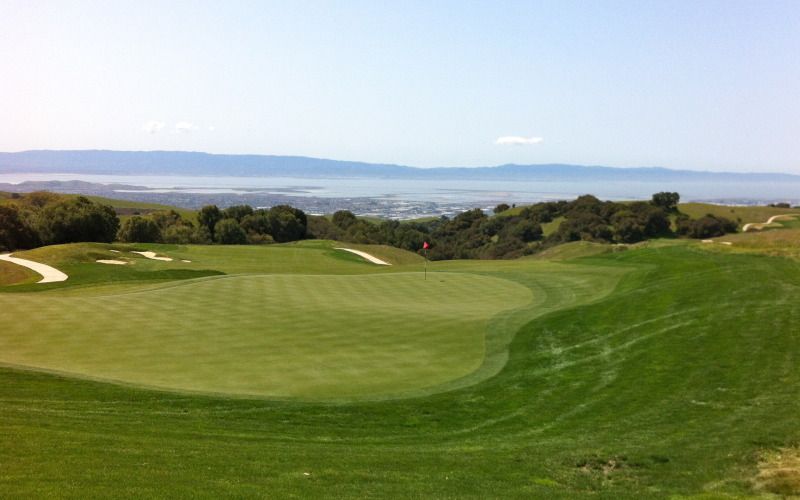
#15, par 3, 188/156. Despite the similarities, it doesn't really feel that similar to #11.

#16, par 5 for members and par 4 for Nationwide tour (from 469, pictured), 557/469/437. The back tee is rarely used because the landing area from there is just too small. From 469, the drive is given a fair landing area and the approach is uphill with only the flagstick visible. There is a run-in to the left side of the green, but the right side is a whole different story.

Can you see the flag? It's between the two bunkers.

Umm, there are some nice long views on this course!

#17, par 4, 465/436. The fairway here is the highest point on the property, and players who can get their teeshots running over the hill are rewarded. The green is far below the fairway, extremely deep, and informally Biarritzy.



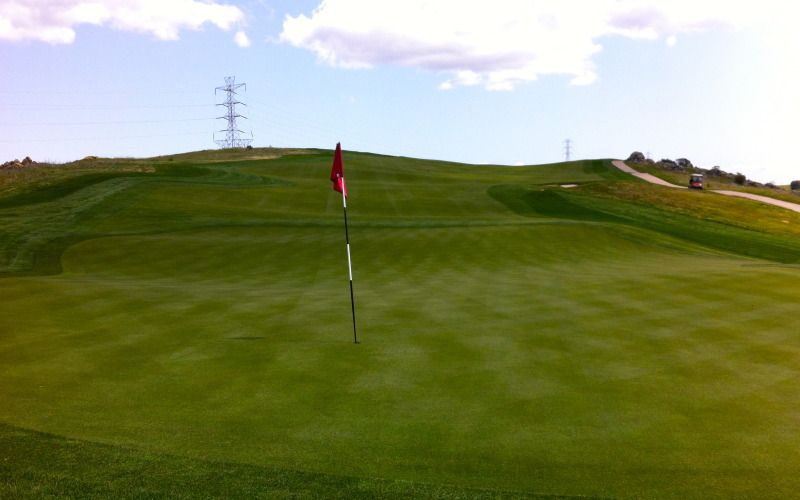
#18, par 5, 598/554. Another native area crosses about 140 yards short of the green, so it's again important to get one's tee shot in play. After the fronting ridges, the green slopes more and more away as you get farther back.
